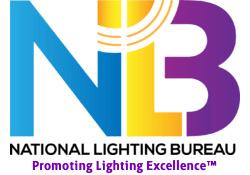ENERGY STAR Seeks Input on Sunsetting Lighting Specs
By Michael O’Boyle and Jim Gaines, Signify
On June 22, 2022, ENERGY STAR informed stakeholders that the program is considering sunsetting the ENERGY STAR specifications relevant to lighting. In November, ENERGY STAR provided additional details and requested feedback on the sunset process with a January 6, 2023, deadline.
To minimize disturbance to the market, ENERGY STAR will plan, with stakeholder input, for an orderly sunset.
The following factors precipitated the sunset:
- LED lighting can replace nearly all conventional light products now, accompanied by considerable energy savings. The LED market share is large and growing, at the expense of less efficient technologies. Market transformation is well underway, and the LED “revolution” is now an “evolution.”
- The U.S. Department of Energy (DOE) issued rules that expand the definition of general service lamps and require efficacy of at least 45 lm/W for products in scope. A coming DOE rule should establish minimum efficacy for LED lamps. Thus, nearly all lamps on the market will be highly efficacious. (Some exceptions, such as incandescent infrared heat lamps and appliance lamps will remain.)
- The testing and compliance burden for ENERGY STAR lamps is high. ENERGY STAR is sensitive to the burden placed on manufacturers.
- Utility programs are reducing rebates for LED lamps and will reduce them further and ultimately eliminate them as the installed baseline technology level rises.
Sunsetting Process: The sunsetting process will include steps such as:
- The end of verification testing
- The Qualified Products List (QPL) stops accepting new applications (proposed: December 2023)
- Utilities will not give rebates for ENERGY STAR qualification after a specific date
- Products manufactured after a certain date will no longer be marked as ENERGY STAR (proposed: December 2024)
- The QPL and other Lighting Program information will be removed from the ENERGY STAR website
- Because the DOE rules apply only to lamps, the sunsetting process may be different for lamps than for luminaires.
Possible consequences: Although ENERGY STAR’s lighting specifications are aimed at high energy efficiency to protect the environment, they also emphasize product performance to promote consumer satisfaction and market acceptance. When the ENERGY STAR lighting program sunsets, higher-performance lamps will have to compete with lower-performance lamps without the benefit of rebates or the ENERGY STAR mark. Possible consequences include:
- shifts in product performance if manufacturers change their performance specifications and redesign products
- some manufacturers may change their equivalency claims (ENERGY STAR presently has the only defined relationship between light output and incandescent equivalency claims).
If the product changes are too significant, then confusion and customer dissatisfaction may result. ENERGY STAR will plan the sunset process to minimize such negative consequences in the market.
Email feedback or questions to lighting@energystar.gov.
Here goes your text ... Select any part of your text to access the formatting toolbar.